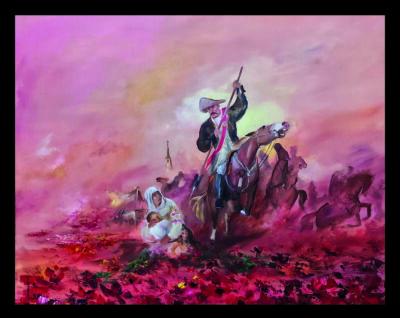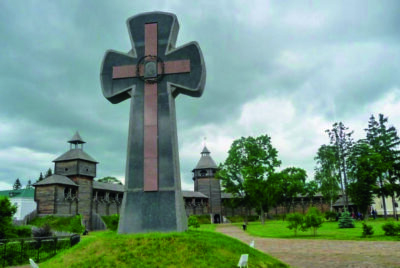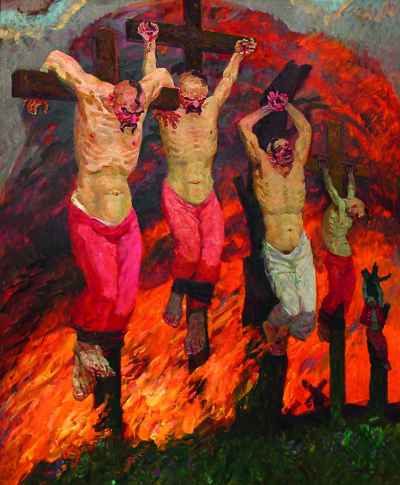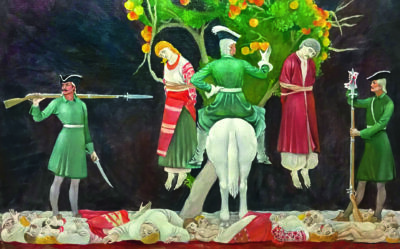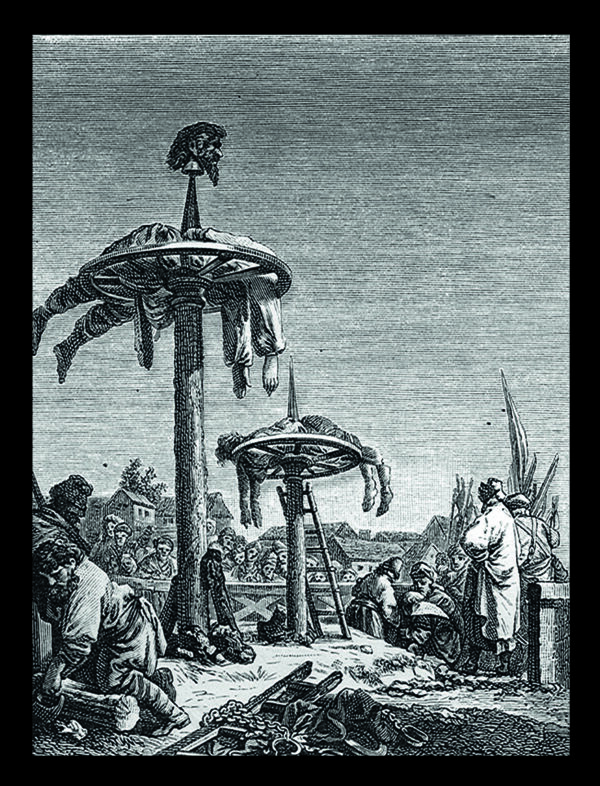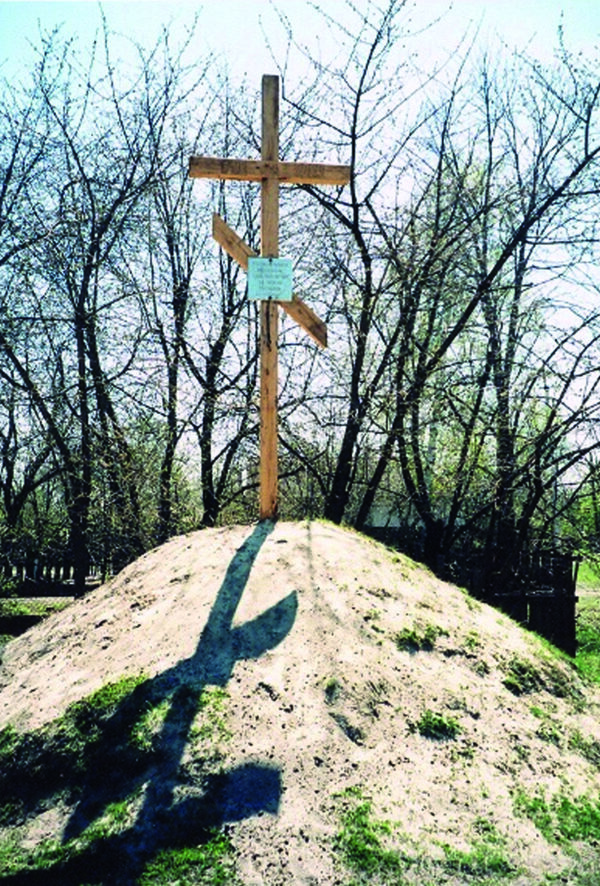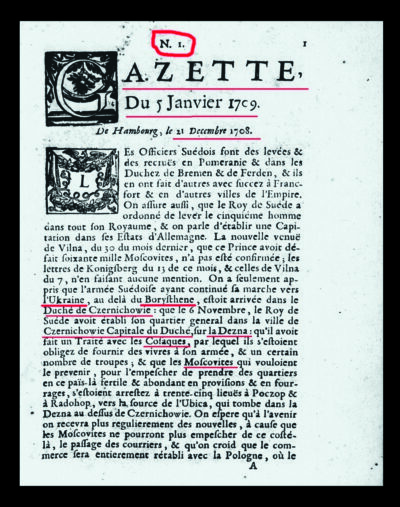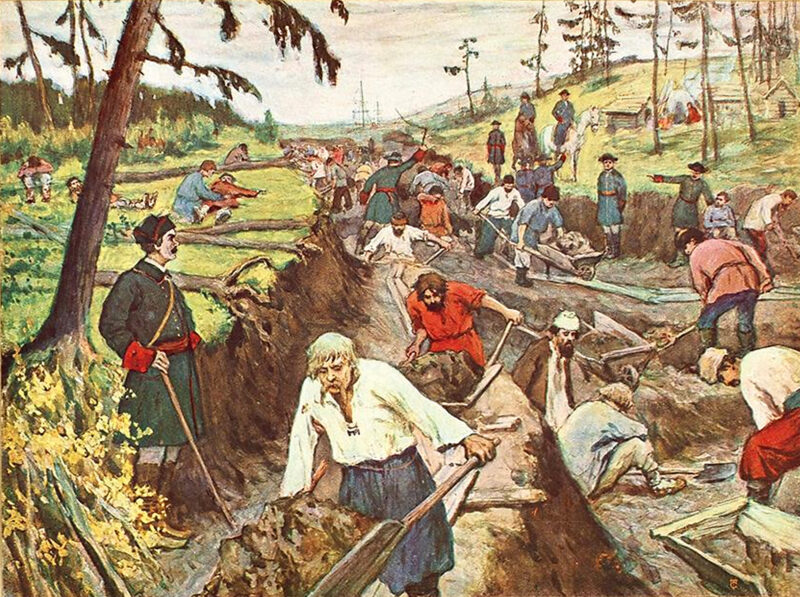“With Peter I, the horrors of Russian history that are especially striking and especially close and understandable to us begin. A raging, drunken beast, rotten from syphilis, has been killing people for quarter of the century, executing, burning, burying the living in the ground, imprisoning his wife, debauching, committing sodomy, getting drunk, and, himself, for fun, chopping off heads…”
Leo Tolstoy (CW, Moscow, vol.26, p. 568)
“..And in the town of Baturyn
Men and women
Were flogged and chopped into stumps,
Churches were burned, shrines and
Icons were trampled underfoot…”
“Duma about Paley and Mazepa”
On November 2, 1708, Moscovite troops under the command of Menshikov, on the orders of Peter I, seized and destroyed the hetman’s capital Baturyn.
After completely plundering Orthodox churches and civilian homes, the Moscovites brutally killed all the inhabitants of the city, including women and infants, and burned the city to the ground, along with numerous churches and mills.
Only a few Cossacks were left alive in order to execute them individually after terrible torture.
After that, according to the testimony of the historian Friksel, according to the order of Menshikov, the corpses of the Cossacks were crucified on rafts and launched down the Seim River to intimidate the population of the Hetmanate.
In total, up to 15 thousand Ukrainians were killed that day.
During 1708-1709, there was a torture chamber in Lebedyn, in Sumy Oblast, where an unknown number of Cossacks were killed by Moscovites.
All of them died a terrible, slow death as a result of various tortures, which were described with horror by witnesses of the events.
In total, approximately 900 people were buried in the huge graves, but the number may have been higher.
In 1709, Peter I sent a punitive expedition to Ukraine under the leadership of Peter Yakovlev.
On May 14, the Chortomlytska Sich was encircled, seized, plundered and burned. All the captured people were killed without exception. Some of them were hung by the Moscow military on rafts, which, as in Baturyn, were launched into the water to terrify the inhabitants of other places.
On April 16, the Moscovite army completely burned the town of Keleberda with everyone who remained in it after the evacuation to Perevolochna.
On April 18, Perevolochna, founded in the 14th century, was also occupied, plundered and burned. The Moscovites killed all the prisoners, as well as women, children and the elderly. People were hacked to death or burned alive. In total, 3,000.
The main means of livelihood were also burned – numerous river mills, all ships and boats.
The Russian military did the same to the cities of Stary and Novy Kodak.
In 1721, Moscovy steals and appropriates the name of another state – Rus`. Peter I proclaims the Russian Empire. This is the year when “Russia” appears.
To further exterminate the Zaporozhian Cossacks and their spirit, Peter I uses thousands of them as slaves.
In 1721 alone, 3,000 Ukrainians died during the construction of the Ladoga Canal from disease, cold, and poor provision. Out of a total of 10,000, that is, almost every third one. Another 2,500 Cossacks died in 1722.
Colonel Pavel Polubotok, who was forced to command them, was later tortured to death by Peter I in the St. Petersburg Fortress.
1731 – A decree of Empress Anna Ivanovna demanded the removal of old Ukrainian printed books from Ukrainian churches and their replacement with books of Moscow publications, the introduction of teaching in colleges in Russian – “introduce sciences in own Russian language.”
1734 – A secret decree of Anna Ivanovna to the ruler of Ukraine, Prince Alexei Shakhovsky, to prevent marriages of Ukrainians with Poles and Belarusians, and instead “… to urge them and skillfully encourage their marriages with velykorosses.”

